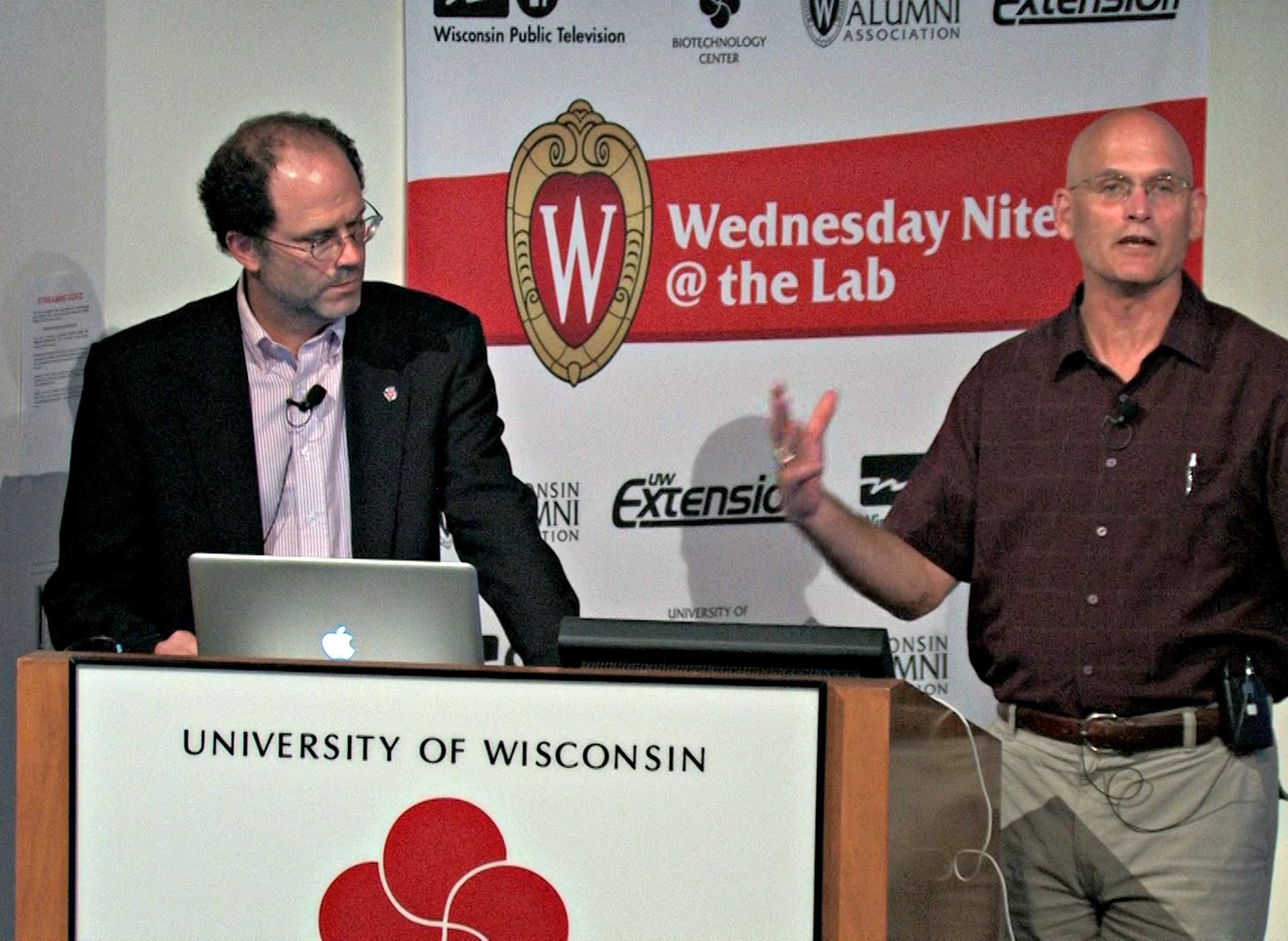
'Weather Guys' Jonathan Martin and Steve Ackerman share their insights about the weather.

'Weather Guys' Jonathan Martin and Steve Ackerman share their insights about the weather.
The "polar vortex" that memorably descended over Wisconsin starting in January 2014 wasn't really all that bad, at least when considered in the context of 66 years of weather data for the Northern Hemisphere's lower troposphere (that is, one mile above the ground).
That's the perspective shared by Jonathan Martin, a meteorology professor at the University of Wisconsin-Madison, in a talk at the campus' Wednesday Nite @ The Lab science series on June 25, 2014. He and fellow "Weather Guy" Steve Ackerman, also a professor with UW-Madison's Department of Atmospheric and Oceanic Sciences, discussed winter weather conditions, and how meteorological conditions can help inform research into climate change.
Studying the lower troposphere is a newer way for scientists to research climate change, and weather forecasters already pay attention to it, especially during the winter, explained Martin. For December 2013 through February 2014, Martin mapped out an area one mile above the ground of the Northern Hemisphere where the air temperature was colder than minus 5 degrees Celsius. That area (measured in millions of square kilometers) gets larger as the temperature falls. A comparison of the 2013-2014 day-to-day change of that average area to the long-term average of each day over 66 years showed that despite the polar vortex, that memorably cold winter actually had a smaller area of the atmosphere with temperatures below minus 5 degrees Celsius.
Along with discussing this research, Martin and Ackerman took a variety of questions from the audience in their talk, which was recorded for Wisconsin Public Television's University Place program. They also offered a look behind the scenes of their appearances on Wisconsin Public Radio's The Larry Meiller Show every month.
Key facts
Key statements